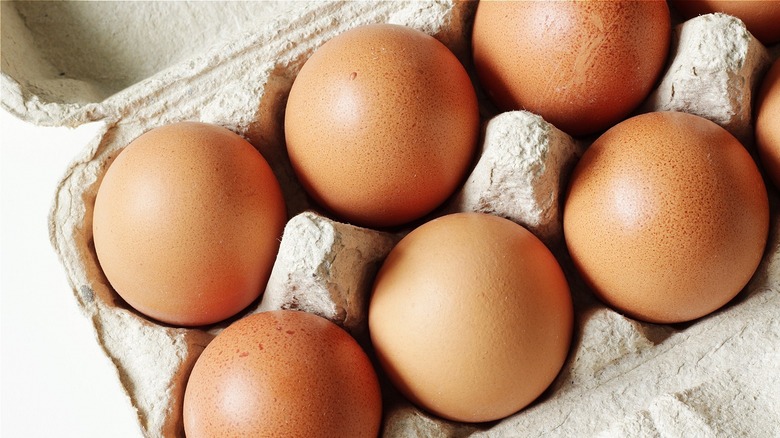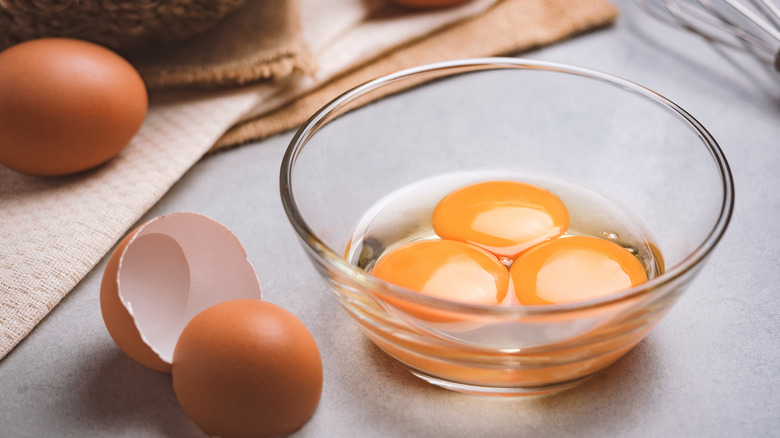The Michelin Eggs Served With Unbroken Shells
The egg may have come before the chicken, at least in regard to historical records. Per a recent study from Proceedings of the National Academy of Sciences, chickens were domesticated in Southeast Asia over 3,000 years ago. We know humans have been cooking eggs for longer than that, thanks to decorated eggshells dating back 60,000 years, and the tradition of decorating eggs to celebrate spring festivals (like Easter), which can be traced as far as 2,700BC in Ancient Egypt .
The egg has taken on great symbolism over the millennia, and it's not surprising that many of the great chefs of their times have tried to riff on their rich simplicity. Auguste Escoffier's first cookbook contained no less than 256 recipes for eggs (via Homer News). The relevance of Arnold Bennett's omelet and Mr. Benedict's egg muffin will outlive any of their creators' cultural contributions. Dave Chang's Momofuku egg is served with potato chips and caviar, Ferran Adria coated a quail's egg in gold at ElBulli, and Alain Passard's iconic hot-cold ovum served in an eggshell cup, from L'Arpège plays with the memory of childhood breakfasts and the stylish elegance of Parisian haute-cuisine.
Amid all the self-conscious scrambling and pompous poaching, the gentle juxtaposition of extravagant ingredients with humble hen's eggs, one chef's gift for misdirection and affinity for the natural rhythms of his native Basque country gave birth to even further innovation. The chef's name is Adoni Luis Aduriz, his restaurant, Mugaritz, and the dish is called "Broken Egg, Frosted Yolk, and White Flowers"
The Mugaritz Egg
Mugaritz is famed for challenging ideas of what a meal can be. This innovation contrasts the reputation of the Basque region for simplicity in food, indeed, as Objective Foodie pointed out, Mugaritz is regularly in the top five of the best restaurants in the world, but is only the fifth best restaurant in its village, according to local TripAdvisor reviews.
Chef Adoni Luis Aduriz explained to "Food on the Edge" that the initial egg-dish idea was inspired by a plant covered in frost. The way the crystals coated the leaves was reminiscent of a layer of sugar, and the desire to crack open a crème brûlée — or an egg. Note that previous iconic fine-dining egg dishes highlighted eggs for their yielding unctuousness, the shells discarded or used as a container. Mugaritz decided to focus on the crunch.
The Mugaritz team finally created a reliable edible eggshell from mannitol and white pigment. These shells are molded, drilled open, filled with "egg whites" made from almonds, before being melted shut and sanded smooth. Hours of painstaking work, all for these eggs to leave the kitchen whole, just to be smashed on the table in front of the diners, revealing their secrets. The dish is finished with a quenelle of egg yolk ice cream, dotted with chunks of candied yolk, and a scattering of beautiful edible flowers. The cold, the candying, and the decoration all tying the gimmick of the shell back to the inspirations for the dish.

